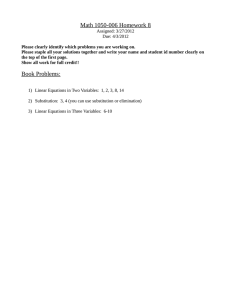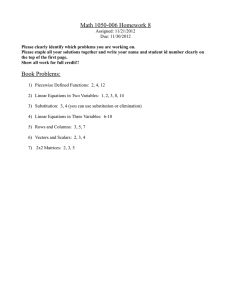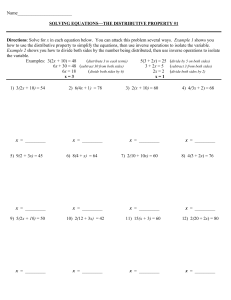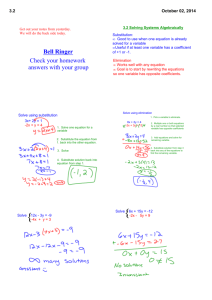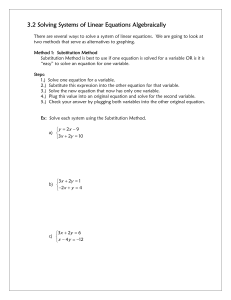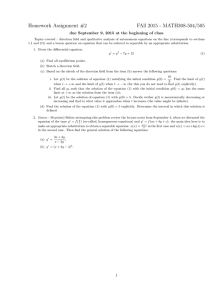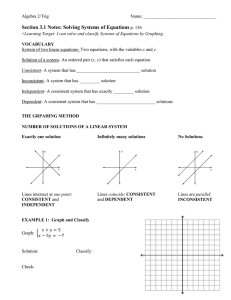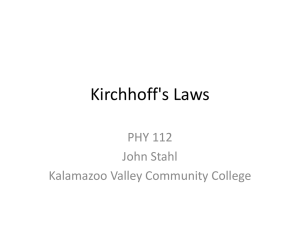Lesson 7.2 Substitution When you have two equations that each
advertisement
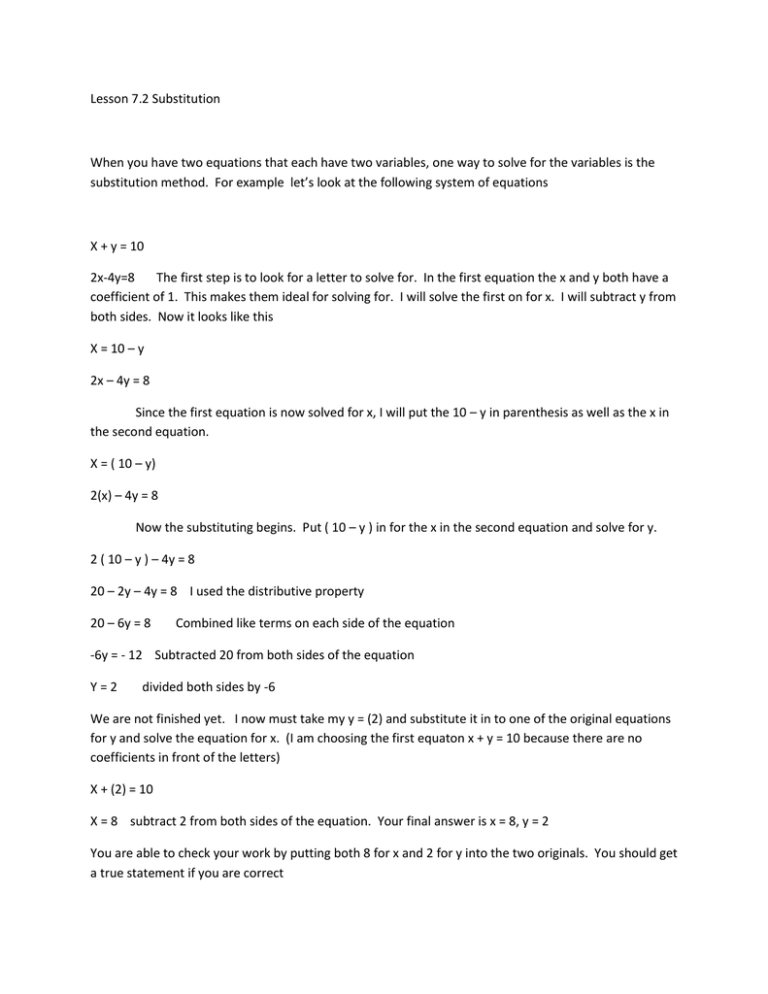
Lesson 7.2 Substitution When you have two equations that each have two variables, one way to solve for the variables is the substitution method. For example let’s look at the following system of equations X + y = 10 2x-4y=8 The first step is to look for a letter to solve for. In the first equation the x and y both have a coefficient of 1. This makes them ideal for solving for. I will solve the first on for x. I will subtract y from both sides. Now it looks like this X = 10 – y 2x – 4y = 8 Since the first equation is now solved for x, I will put the 10 – y in parenthesis as well as the x in the second equation. X = ( 10 – y) 2(x) – 4y = 8 Now the substituting begins. Put ( 10 – y ) in for the x in the second equation and solve for y. 2 ( 10 – y ) – 4y = 8 20 – 2y – 4y = 8 I used the distributive property 20 – 6y = 8 Combined like terms on each side of the equation -6y = - 12 Subtracted 20 from both sides of the equation Y=2 divided both sides by -6 We are not finished yet. I now must take my y = (2) and substitute it in to one of the original equations for y and solve the equation for x. (I am choosing the first equaton x + y = 10 because there are no coefficients in front of the letters) X + (2) = 10 X = 8 subtract 2 from both sides of the equation. Your final answer is x = 8, y = 2 You are able to check your work by putting both 8 for x and 2 for y into the two originals. You should get a true statement if you are correct X + y = 10 2x – 4y = 8 (8) + (2) = 10 2( 8) – 4(2) = 8 10=10 16 – 8 = 8 8=8
